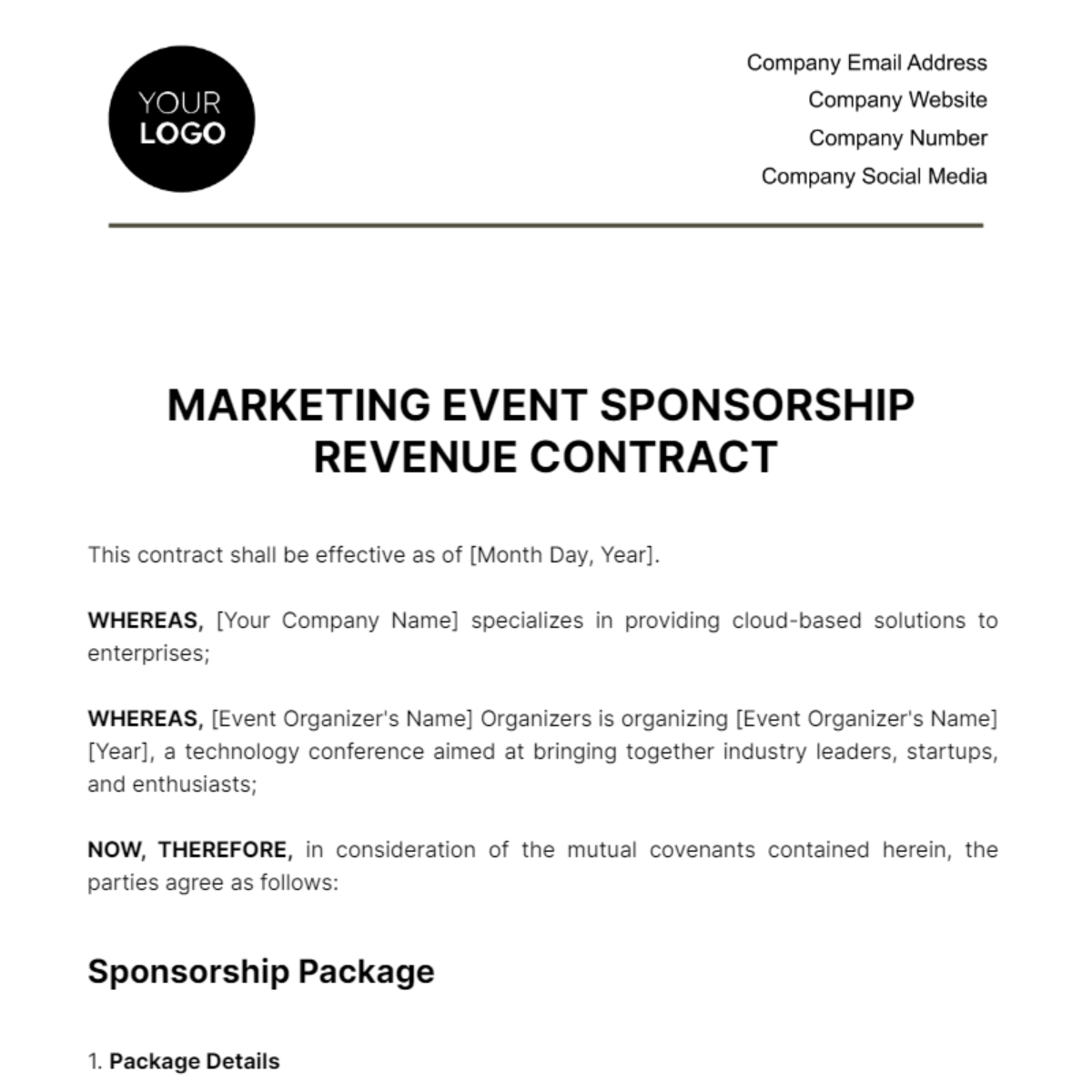Revenue Project Specification
1. Introduction
The Revenue Project Specification at [Your Company Name] aims to identify and implement strategies to generate or enhance revenue for the organization. This document outlines the objectives, requirements, scope, and other important components of the project to ensure a clear understanding and successful execution.
2. Project Goals
The primary goals of the Revenue Project are:
Increase overall revenue by 20% within the next fiscal year.
Diversify revenue streams to mitigate risks.
Optimize pricing strategies for existing products and services.
Identify and tap into new market segments.
Improve retention and upselling rates among current customers.
3. Expected Outcomes
The project aims to achieve the following outcomes:
Enhanced Financial Performance and Profitability: The project is expected to significantly boost financial metrics, leading to increased profits and a stronger bottom line.
Greater Market Share and Competitive Edge: By leveraging innovative strategies and expanding the product line, the project will help capture a larger market share and strengthen the company's position against competitors.
Improved Customer Satisfaction and Loyalty: Enhanced product quality and targeted marketing efforts are anticipated to improve customer satisfaction, fostering greater loyalty and repeat business.
Scalable and Sustainable Revenue Growth: The project will establish robust growth strategies that are scalable and designed to sustain long-term revenue increases, ensuring ongoing business success.
4. Financial Projections
A detailed financial forecast for the Revenue Project is outlined below:
Metric | Total |
|---|---|
Projected Revenue ($) | 26,000,000 |
Cost of Implementation ($) | 5,200,000 |
Net Revenue ($) | 20,800,000 |
5. Resource Requirements
5.1 Human Resources
The project will require the following human resources:
Project Manager
Business Analysts
Marketing Specialists
Sales Team
Product Development Team
Finance Advisor
5.2 Technological Resources
The technological resources required include:
Customer Relationship Management (CRM) Software
Data Analytics Platforms
Marketing Automation Tools
Financial Forecasting Software
Sales Enablement Tools
5.3 Financial Resources
The financial resources required for the project are enumerated below:
Initial Investment: $1,000,000
Quarterly Operational Costs: $300,000
Contingency Fund: $200,000
6. Project Scope
The scope of the Revenue Project encompasses the following key activities:
Market Analysis and Research: Conduct comprehensive analysis to understand market trends, customer needs, and competitive landscape, ensuring data-driven decision-making.
Development and Implementation of Pricing Strategies: Create and execute effective pricing strategies for existing products and services to enhance profitability and market competitiveness.
Exploring and Entering New Market Segments: Identify and pursue new market opportunities to diversify revenue streams and expand the customer base.
Optimization of Sales Processes: Streamline and enhance sales processes to improve efficiency, increase conversion rates, and maximize revenue.
Customer Retention and Upsell Programs: Develop and implement programs designed to increase customer retention and leverage upselling opportunities for additional revenue growth.
Monitoring and Reporting on Financial Performance: Track and analyze financial metrics regularly to assess performance, ensure alignment with revenue goals, and make informed adjustments as needed.
7. Risk Management
The table below outlines potential risks associated with the project and their corresponding mitigation strategies:
Risk | Description | Mitigation Strategy |
|---|---|---|
Market Fluctuations | Variations in market conditions impact revenue projections. | Regularly monitor market trends and adapt strategies accordingly. |
Implementation Delays | Delays in project execution affecting timelines. | Develop contingency plans and allocate resources to address potential delays. |
Customer Resistance | Customers may resist new strategies or changes. | Use effective communication and change management to educate and reassure customers. |
Financial Constraints | Budget limitations restricting project execution. | Implement detailed budgeting and financial oversight to ensure efficient resource allocation. |
Technological Failures | Technical issues disrupting operations or data integrity. | Set up backup systems and ensure robust technical support to handle any failures. |
8. Timeline
The project will follow the timeline below:
Phase | Duration |
|---|---|
Market Analysis | Month 1 - Month 2 |
Strategy Development | Month 2 - Month 3 |
Implementation Phase 1 | Month 3 - Month 6 |
Interim Evaluation | Month 6 |
Implementation Phase 2 | Month 6 - Month 9 |
Project Completion and Review | Month 9 - Month 12 |
9. Approval and Review Processes
The project will follow a stringent approval and review process to ensure all objectives are met efficiently. Key milestones and deliverables will undergo approval by the executive team, and periodic reviews will be conducted to track progress and ensure alignment with the overall goals.
10. Conclusion
The Revenue Project is a strategic initiative aimed at enhancing the organization's revenue generation capability. With clearly defined objectives, detailed financial forecasts, and a comprehensive resource plan, the project is poised to achieve its goals and contribute significantly to the organization's growth and success.








